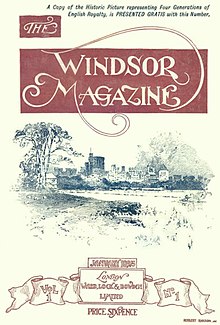
Baroness Emma Orczy, usually known as Baroness Orczy or to her family and friends as Emmuska Orczy, was a Hungarian-born British novelist and playwright. She is best known for her series of novels featuring the Scarlet Pimpernel, the alter ego of Sir Percy Blakeney, a wealthy English fop who turns into a quick-thinking escape artist in order to save French aristocrats from "Madame Guillotine" during the French Revolution, establishing the "hero with a secret identity" in popular culture.
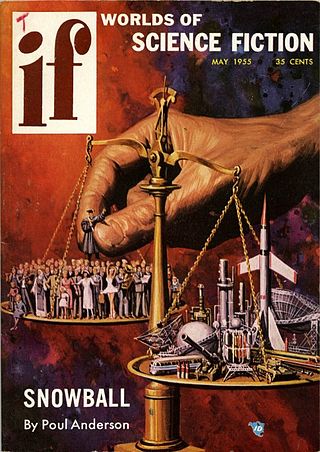
If was an American science fiction magazine launched in March 1952 by Quinn Publications, owned by James L. Quinn.

Cecil William Mercer, known by his pen name Dornford Yates, was an English writer and novelist whose novels and short stories, some humorous, some thrillers, were best-sellers during the Interwar Period.

Science Fantasy, which also appeared under the titles Impulse and SF Impulse, was a British fantasy and science fiction magazine, launched in 1950 by Nova Publications as a companion to Nova's New Worlds. Walter Gillings was editor for the first two issues, and was then replaced by John Carnell, the editor of New Worlds, as a cost-saving measure. Carnell edited both magazines until Nova went out of business in early 1964. The titles were acquired by Roberts & Vinter, who hired Kyril Bonfiglioli to edit Science Fantasy; Bonfiglioli changed the title to Impulse in early 1966, but the new title led to confusion with the distributors and sales fell, though the magazine remained profitable. The title was changed again to SF Impulse for the last few issues. Science Fantasy ceased publication the following year, when Roberts & Vinter came under financial pressure after their printer went bankrupt.

Unknown was an American pulp fantasy fiction magazine, published from 1939 to 1943 by Street & Smith, and edited by John W. Campbell. Unknown was a companion to Street & Smith's science fiction pulp, Astounding Science Fiction, which was also edited by Campbell at the time; many authors and illustrators contributed to both magazines. The leading fantasy magazine in the 1930s was Weird Tales, which focused on shock and horror. Campbell wanted to publish a fantasy magazine with more finesse and humor than Weird Tales, and put his plans into action when Eric Frank Russell sent him the manuscript of his novel Sinister Barrier, about aliens who own the human race. Unknown's first issue appeared in March 1939; in addition to Sinister Barrier, it included H. L. Gold's "Trouble With Water", a humorous fantasy about a New Yorker who meets a water gnome. Gold's story was the first of many in Unknown to combine commonplace reality with the fantastic.

The Idler was an illustrated monthly magazine published in Great Britain from 1892 to 1911. It was founded by the author Robert Barr, who brought in the humorist Jerome K. Jerome as co-editor, and its contributors included many of the leading writers and illustrators of the time.
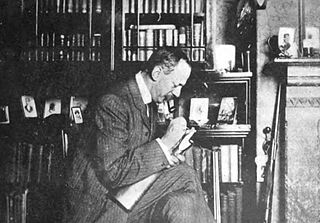
Charles John Cutcliffe Wright Hyne was an English novelist who was also known by the pen name Weatherby Chesney. He is perhaps best remembered as the author of The Lost Continent: The Story of Atlantis. He is also remembered for his Captain Kettle stories and for The Recipe for Diamonds.

Alice Muriel Williamson, who published chiefly under names the "C. N. and A. M. Williamson" and "Mrs. C. N. Williamson," was an American-English author.
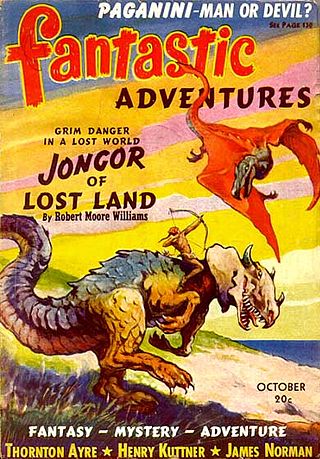
Fantastic Adventures was an American pulp fantasy and science fiction magazine, published from 1939 to 1953 by Ziff-Davis. It was initially edited by Raymond A. Palmer, who was also the editor of Amazing Stories, Ziff-Davis's other science fiction title. The first nine issues were in bedsheet format, but in June 1940 the magazine switched to a standard pulp size. It was almost cancelled at the end of 1940, but the October 1940 issue enjoyed unexpectedly good sales, helped by a strong cover by J. Allen St. John for Robert Moore Williams' Jongor of Lost Land. By May 1941 the magazine was on a regular monthly schedule. Historians of science fiction consider that Palmer was unable to maintain a consistently high standard of fiction, but Fantastic Adventures soon developed a reputation for light-hearted and whimsical stories. Much of the material was written by a small group of writers under both their own names and house names. The cover art, like those of many other pulps of the era, focused on beautiful women in melodramatic action scenes. One regular cover artist was H.W. McCauley, whose glamorous "MacGirl" covers were popular with the readers, though the emphasis on depictions of attractive and often partly clothed women did draw some objections.

Ward, Lock & Co. was a publishing house in the United Kingdom that started as a partnership and developed until it was eventually absorbed into the publishing combine of Orion Publishing Group.

In literature, a serial is a printing or publishing format by which a single larger work, often a work of narrative fiction, is published in smaller, sequential instalments. The instalments are also known as numbers, parts, fascicules or fascicles, and may be released either as separate publications or within sequential issues of a periodical publication, such as a magazine or newspaper.
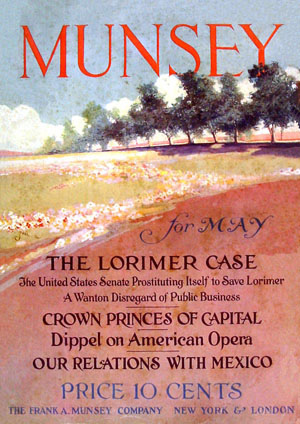
Munsey's Weekly, later known as Munsey's Magazine, was a 36-page quarto American magazine founded by Frank A. Munsey in 1889 and edited by John Kendrick Bangs. Frank Munsey aimed to publish "a magazine of the people and for the people, with pictures and art and good cheer and human interest throughout". Soon after its inception, the magazine was selling 40,000 copies a week. In 1891, Munsey's Weekly adopted a monthly schedule and was renamed Munsey's Magazine.

Cassell's Magazine is a British magazine that was published monthly from 1897 to 1912. It was the successor to Cassell's Illustrated Family Paper, (1853–1867) becoming Cassell's Family Magazine in 1874, Cassell's Magazine in 1897, and, after 1912, Cassell's Magazine of Fiction.

The Royal Magazine was a monthly British literary magazine that was published between 1898 and 1939. Its founder and publisher was Sir Arthur Pearson.
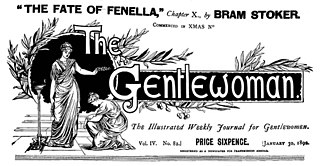
The Gentlewoman was a weekly illustrated paper for women founded in 1890 and published in London.

George Wylie Hutchinson (1852–1942) was a painter and leading illustrator in Britain and was from Great Village, Nova Scotia, Canada. He illustrated the works of Arthur Conan Doyle, Rudyard Kipling, Hall Caine, Robert Louis Stevenson and Israel Zangwill. His paintings inspired the poem "Large Bad Picture" and "Poem", both by Elizabeth Bishop, his great grand niece. Hutchinson was a contributor to and subject of the novel The Master (1895) by Israel Zangwill, with whom he was a close friend.
Robert Alfred John Walling was an English journalist and author of detective novels, who signed his works "R. A. J. Walling".

The Brother of Daphne is a 1914 collection of comic short stories by the English author Dornford Yates, the first book published under the pen name he had been using for magazine pieces since 1910. This was also the first book to feature the group of characters that featured in many of his future works: Bertram ('Berry') Pleydell, his wife and cousin Daphne Pleydell, Daphne's brother Boy Pleydell, another cousin Jonathan ('Jonah') Mansel, and Jonah's younger sister Jill Mansel. The group of five - Berry, Daphne, Boy, Jonah and Jill - later came to be known collectively as 'Berry and Co'.
A Bid for Fortune; Or, Doctor Nikola's Vendetta (1895) is a novel by Australian writer Guy Boothby. It was his first novel to feature his recurring character Dr. Nikola. It was originally serialised in The Windsor Magazine : An Illustrated Monthly for Men and Women over 22 issues in 1895, and was then published in the United Kingdom by Ward, Lock and Bowden in the same year.
Doctor Nikola (1896) is a novel by Australian writer Guy Boothby. It was his second novel to feature his recurring character Dr. Nikola. It was originally serialised in The Windsor Magazine : An Illustrated Monthly for Men and Women over 8 issues in 1896, and in The Argus newspaper in Melbourne before it was then published in book form in the United Kingdom by Ward, Lock and Bowden in the same year.
